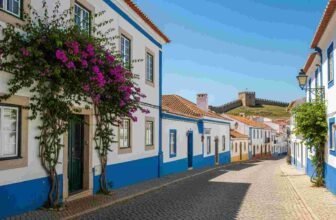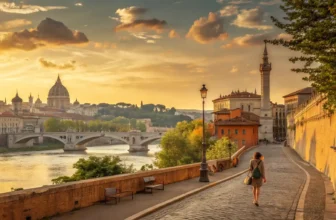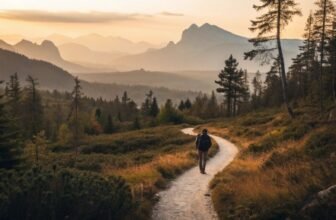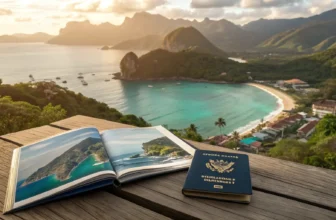
Sunshine warms your skin as a gentle breeze carries the scent of pine and sea salt.
All around you, the world slows down. Italy’s secret corners—where the crowds thin and the pace of life is luxuriously slow—offer a chance to wander through landscapes that feel untouched by time.
Here, the authentic Italy awaits, filled with rich traditions, hidden gems, and quiet moments of wonder. It’s a journey that promises more than just sights—it’s an invitation to rediscover the true soul of Italy.
Ready to step off the beaten path? Keep reading to uncover these transformative escapes.
1. Basilicata
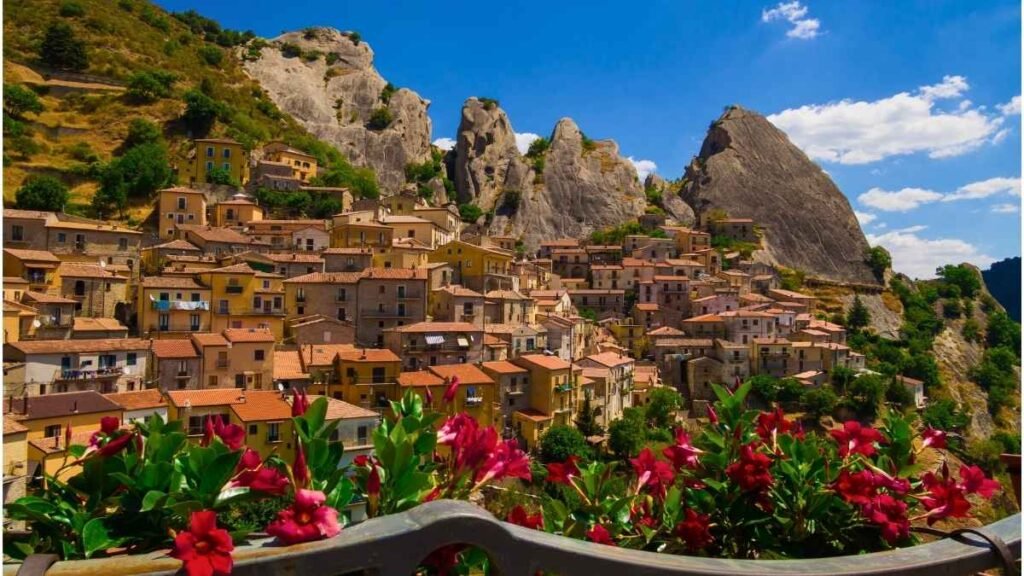
Basilicata is where you’ll feel like you’ve landed somewhere off the map—while still having all the comforts of travel. With a population of about 529,897 spread across roughly 10,073 km², it’s one of Italy’s least-populated regions. The terrain is rugged: about 47% mountains, 45% hills, and only 8% plains. So, you’ll find dramatic panoramas, winding roads, and fewer people.
In terms of culture and travel interest, the city of Matera is a star here—its ancient cave dwellings (the Sassi) are a UNESCO World Heritage site. The region also boasts beaches along both the Ionian and Tyrrhenian seas, and the largest national park in Italy, Parco Nazionale del Pollino. Despite these assets, tourism is still modest, and Basilicata remains “remote” in feel.
Key Practical Information:
- Peak/Off-peak seasons: Summer (June-Aug) is warm and beach-friendly; spring and early autumn are ideal for exploring the hills with fewer visitors.
- Best ways to reach & explore: You’ll likely enter via Bari or Naples and then drive or take a train into Basilicata. Car hire gives you flexibility to explore remote villages.
- Ideal duration: 3-4 days minimum to explore Matera and the coast, 5-7 days if you want to venture into the mountains.
- Must-try experiences: Explore the Sassi of Matera at dawn, drive the coastal road near Maratea, and hike in Parco Nazionale del Pollino.
- Budget considerations: Accommodations and meals tend to cost less here compared to the more famous regions of Italy.
- Cultural etiquette tips: The pace in local villages is slower, and you’ll often find traditional ways of life in full swing—take the time to ask locals about their history and traditions.
- Photography opportunities: Early-morning light on the Sassi in Matera, coastal vistas at Maratea, and sunset in the Apennine hills.
2. Puglia
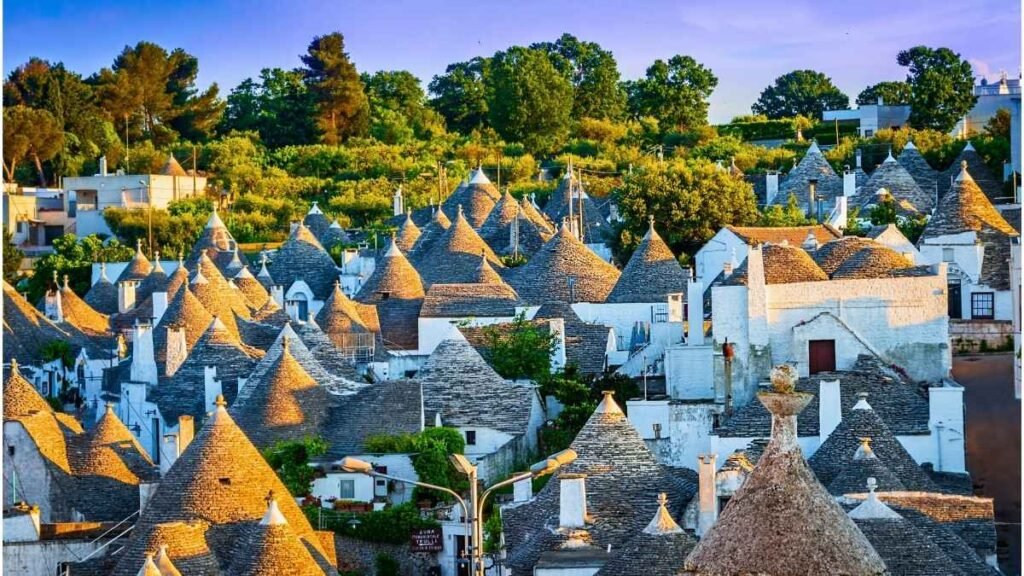
Puglia is like Italy’s rich, understated cousin: glorious coastlines, ancient towns, and olive groves as far as the eye can see—without the crowds. Pre-pandemic, Puglia saw around 4.2 million arrivals, with international nights showing an 8% rise. It’s large enough to offer variety but small enough to feel open.
The landscape varies from the distinctive white-washed towns of the Valle d’Itria to the coastal Salento beaches and historic ports like Bari. What’s great about Puglia is that it retains a stronger Italian domestic audience than many other regions, lending an authentic, local atmosphere. You’ll find fewer tourist groups here, which gives you a much more immersive experience.
Key Practical Information:
- Peak/Off-peak seasons: Late spring (May) and September-October are ideal for fewer crowds but warm seas.
- Best ways to reach & explore: Fly into Bari or Brindisi airports; renting a car is highly recommended to explore the countryside and coast.
- Ideal duration: 5-7 days to appreciate both the coast, countryside, and historic towns without rushing.
- Must-try experiences: Stay in a traditional “trullo” in Alberobello, cycle through the olive groves, and beach-hop along the Salento coast.
- Budget considerations: Puglia offers great value compared to more well-known regions like Veneto or Lombardy.
- Cultural etiquette tips: Puglian locals appreciate interest in their food and culture—don’t be shy to ask about the olives, the wines, and their way of life.
- Photography opportunities: The trulli in Alberobello at dusk, turquoise waters along the coast, and the ancient stone towns bathed in golden light.
3. Calabria

Calabria sits at the toe of Italy’s boot, but it’s not just about geography—it’s about a sense of discovery. Calabria has about 1,832,147 residents across 15,222 km², and the terrain is dramatic: 42% mountainous, 49% hilly, and just 9% plains. With 780 km of coastline on two seas (Tyrrhenian & Ionian), Calabria offers both mountain views and beach breaks, all with fewer crowds.
Rich in history, Calabria has Greek colonies, Byzantine heritage, and Norman castles. The coast, especially around Tropea and Capo Vaticano, is growing in popularity, but it hasn’t exploded into the mass-market frenzy of other Italian beaches. The region feels unspoiled and offers some of the most scenic, remote coastlines in all of Italy.
Key Practical Information:
- Peak/Off-peak seasons: Summer is perfect for beaches; spring and early autumn are better for hiking and exploring the mountains.
- Best ways to reach & explore: Fly into Lamezia Terme or Reggio Calabria, then rent a car for flexibility in reaching remote villages and coastal spots.
- Ideal duration: 4-6 days minimum for coast and mountains; a week if you want to explore deeper.
- Must-try experiences: Beach hop along the Tyrrhenian coast, savor ‘nduja sausages in Tropea, and explore the Pollino National Park.
- Budget considerations: Calabria remains more affordable compared to the more tourist-heavy northern regions.
- Cultural etiquette tips: The area is known for its slower pace of life. Don’t expect the same tourist infrastructure as the big cities.
- Photography opportunities: Cliffside sunsets over the Ionian Sea, ancient ruins set against the mountains, and peaceful beach views in quiet fishing villages.
4. Abruzzo

Abruzzo is the perfect blend of mountain and coast. With 1.33 million arrivals in 2021, it’s still under the radar but steadily growing in popularity. The region offers a diversity of landscapes: from the rugged Gran Sasso mountains to the picturesque Adriatic coastline.
Abruzzo is less commercialized than many Italian regions, which means you’ll get to experience authentic Italian village life. Whether you’re skiing in the mountains or lounging on the beaches of the Trabocchi coast, Abruzzo gives you two experiences for the price of one. And with fewer tourists, you get a deeper connection to local culture.
Key Practical Information:
- Peak/Off-peak seasons: Summer for beach lovers and winter for skiing. Late spring and early autumn are great for a mix of both.
- Best ways to reach & explore: Fly into Pescara and rent a car for the best access to both the coast and mountains.
- Ideal duration: 4-5 days minimum to explore either coast or mountains; a week if you want both.
- Must-try experiences: Hiking in Gran Sasso National Park, exploring the medieval town of Sulmona, and discovering the quiet Trabocchi coast.
- Budget considerations: More affordable than Italy’s famous tourist destinations; you’ll get more value for your money here.
- Cultural etiquette tips: The region has deep-rooted traditions, so embrace local customs—food, festivals, and storytelling.
- Photography opportunities: Panoramic mountain views, the beautiful Trabocchi coast, and ancient stone villages.
5. Molise

Molise might just be the “hidden gem” you’re looking for. As Italy’s second-smallest region, with just 287,966 residents, it’s easily one of the least-visited places in Italy—making it the perfect getaway for peace and tranquility. With its combination of mountains, rolling hills, and a narrow Adriatic coastline (only about 35 km), you’ll feel like you’re stepping into a quieter, more authentic version of Italy.
The region is still a bit of a mystery to international tourists, and it’s exactly that charm that makes it so appealing. You’ll find charming medieval villages, a slower pace of life, and plenty of room to roam. Molise offers a more personal Italian experience where you can truly immerse yourself in the culture and landscape without the crowds.
Key Practical Information:
- Peak/Off-peak seasons: Late spring to early summer or autumn is best for exploring the countryside and enjoying the festivals.
- Best ways to reach & explore: There’s no major airport in the region, so you’ll likely fly into nearby airports and then drive to your destination.
- Ideal duration: 3-4 days for one area (coast or hills); 5-6 days if you want to explore more widely.
- Must-try experiences: Visit Termoli on the Adriatic coast, join in the medieval festival “Ndocciata” in Agnone, and try truffle hunting in the hills.
- Budget considerations: Molise is one of the most affordable places to visit in Italy, especially for food and lodging.
- Cultural etiquette tips: Some towns may have limited English-speaking services—learn a few phrases in Italian and approach locals with warmth.
- Photography opportunities: Coastal views at sunset, the medieval streets of Agnone, and lush, unspoiled landscapes.
6. Friuli-Venezia Giulia

Friuli-Venezia Giulia might not be the first region that comes to mind when you think of Italy, but that’s exactly why it’s so special. Tucked away in the northeast, it offers a unique blend of Italian, Slovenian, and Austrian influences. Its diverse landscape is like a smorgasbord for nature lovers: from the rugged peaks of the Julian Alps to the gentle, serene Adriatic coast. With a population of just over 1.2 million, this region feels like Italy’s hidden corner, offering visitors a slice of the country’s most authentic flavors without the tourist masses.
What makes this region unique is the mix of cultural diversity and natural beauty. You can explore Trieste, a port city with a distinctly European flavor, or venture into the lush vineyards of the Collio region, known for its white wines. The Carnic Alps provide a playground for outdoor enthusiasts, while the coastal town of Grado offers quiet beach moments with a historic twist.
Key Practical Information:
- Peak/Off-peak seasons: Late spring (May-June) and early autumn (Sept-Oct) are great for hiking and exploring vineyards with fewer crowds.
- Best ways to reach & explore: Fly into Trieste or Venice, then explore by car or regional trains. The train ride along the coast offers some spectacular views.
- Ideal duration: 4-5 days to experience both coast and mountains, with time for Trieste and its surrounding vineyards.
- Must-try experiences: Visit Trieste’s Roman ruins, take a wine tour through Collio, hike the Carnic Alps, and relax in the beach town of Grado.
- Budget considerations: It’s more affordable than tourist-heavy regions like Tuscany, offering a solid balance of luxury and budget options.
- Cultural etiquette tips: Embrace the blend of languages; most people speak Italian, but you may also hear Slovenian and Friulian. The region has a distinct identity, so respecting its mixed heritage is appreciated.
- Photography opportunities: Panoramic views from the Alps, vineyards stretching into the horizon, and the historic port city of Trieste at sunset.
7. Marche

If you’re after the quiet charm of Italy’s underrated countryside, Marche might just be your perfect match. With a population of about 1.5 million, Marche offers a quieter, more authentic version of rural Italy without the crowds you’ll find in Tuscany. The region is characterized by rolling hills, medieval hilltop towns, and stretches of quiet, pristine beaches. Unlike its famous neighbors like Tuscany, Marche retains a low-key vibe, making it a haven for travelers seeking tranquility.
What sets Marche apart is its variety of landscapes. You can visit Urbino, a UNESCO World Heritage site that’s both a stunning university town and a Renaissance treasure. Or head to Numana on the coast, where the beaches are less crowded but still perfect for a day of relaxation. Marche is also home to Frasassi Caves, one of Europe’s most impressive underground complexes, hidden deep in the Apennines.
Key Practical Information:
- Peak/Off-peak seasons: Spring (April-May) and early autumn (Sept) are great for hiking and exploring the charming towns. Avoid the summer heat for the best experience.
- Best ways to reach & explore: Fly into Ancona or Rimini and rent a car to explore the quieter corners of the region.
- Ideal duration: 4-6 days to explore both the coast and inland hill towns.
- Must-try experiences: Stroll through Urbino’s historical center, visit Frasassi Caves, hike the Monte Conero Natural Park, and relax in Numana.
- Budget considerations: Marche is relatively affordable, offering great value for its landscapes, cultural sites, and food.
- Cultural etiquette tips: Marche is traditionally agricultural, and its residents take pride in their rural way of life. Be mindful and respectful when visiting smaller villages.
- Photography opportunities: Sunrise over Urbino’s Renaissance architecture, the dramatic cliffs of Monte Conero, and the tranquil beaches of Numana.
8. Trentino-Alto Adige/Südtirol

Trentino-Alto Adige/Südtirol is Italy’s mountainous playground, where the Alpine culture thrives. Located in the far north, it shares borders with Austria and Switzerland, and that’s reflected in its unique mix of Italian, German, and Ladin cultures. With just over 1 million people spread across stunning landscapes, this region offers both winter sports and summer outdoor adventures—without the overcrowded feel of larger, more famous Alpine resorts.
What makes this area so special is its year-round versatility. Bolzano, the capital, is a small but vibrant city where you can explore the South Tyrol Museum of Archaeology (home to the famous Ötzi the Iceman). In the summer, the Dolomites become a hiker’s paradise, and in winter, they transform into one of the best ski destinations in Europe. The lakes here, like Lago di Braies, are breathtakingly clear, surrounded by towering mountains.
Key Practical Information:
- Peak/Off-peak seasons: Winter is the high season for skiing; summer is best for hiking and lakeside activities, particularly from June-August.
- Best ways to reach & explore: Fly into Bolzano or Verona and rent a car. The region is easily navigable by public transport, especially the Dolomiti Superski area.
- Ideal duration: 4-6 days to explore both the Dolomites and lakes.
- Must-try experiences: Visit Ötzi in Bolzano, hike around Lago di Braies, experience skiing in the Dolomites, and sample South Tyrolean apple strudel.
- Budget considerations: While generally pricier than southern Italy, there are budget options if you visit outside the peak winter and summer seasons.
- Cultural etiquette tips: The region has a distinct German-speaking population—greet people in German if possible and be aware of the linguistic sensitivities.
- Photography opportunities: The stunning reflections of mountains on Lake Braies, alpine meadows in bloom, and picturesque villages nestled in the Dolomites.
9. Sardinia (Interior/Coastal Lesser-Visited Parts)

Sardinia is often associated with its glamorous Costa Smeralda and azure waters, but the island’s interior and lesser-visited coasts hold their own hidden treasures. With a population of around 1.6 million, Sardinia offers much more than sun-soaked beaches and luxury resorts. The inland areas, with their rugged mountains and ancient traditions, feel almost untouched by time.
Here’s what makes this region stand out: You can explore Barbagia, a mountainous region with deep traditions and ancient stone villages, or wander through the Gennargentu National Park, where wild landscapes remain unspoiled by mass tourism. The west coast around Bosa offers beaches that remain relatively quiet, even in peak season, and the area is a great place to experience Sardinian cuisine in its most authentic form.
Key Practical Information:
- Peak/Off-peak seasons: Best to visit in spring (April-May) or late autumn (Sept-Oct) for fewer tourists and cooler weather.
- Best ways to reach & explore: Fly into Cagliari or Olbia, and rent a car to reach the quieter interior or coastal towns.
- Ideal duration: 5-7 days for a deeper exploration of Sardinia’s unique interior and lesser-known beaches.
- Must-try experiences: Visit the archaeological site of Su Nuraxi in Barumini, explore Sardinia’s rugged interior, and enjoy local specialties like suckling pig and pecorino cheese.
- Budget considerations: Prices in the interior are generally lower than on the coast, making it an affordable option for travelers who want to avoid the high-end resorts.
- Cultural etiquette tips: Sardinia has a very proud and distinct culture. Take time to learn about its history and customs—local festivals and traditions are rich and deeply ingrained in daily life.
- Photography opportunities: The winding roads through the Gennargentu Mountains, the colorful town of Bosa by the sea, and the ancient stone nuraghe structures scattered across the landscape.
10. Liguria (Lesser-Known Stretches Beyond the Main Riviera Hubs)

Liguria’s cinque terre may be world-famous, but it’s the quieter stretches of the Ligurian coast that hold the real charm. With a population of about 1.5 million, Liguria’s well-known spots can get crowded, but venture off the beaten path and you’ll discover towns like Finale Ligure and Lavagna, which offer the same coastal beauty with fewer crowds.
The appeal here is contrast: the busy, tourist-centric beaches give way to more remote spots, and the coastline is dotted with cliffs, hidden coves, and untouched beaches. If you head inland, you’ll find charming villages nestled in the hills that seem stuck in time. Exploring the less-visited parts of Liguria feels like discovering Italy before it became a must-see destination.
Key Practical Information:
- Peak/Off-peak seasons: Summer can be crowded along the famous Cinque Terre, but the quieter spots like Finale Ligure are best in spring or early autumn.
- Best ways to reach & explore: Fly into Genoa or Nice, and rent a car for full flexibility in exploring the hidden beaches and hillside villages.
- Ideal duration: 3-4 days to explore the less-visited coast and hills.
- Must-try experiences: Visit the quieter beaches of Finale Ligure, stroll through the hilltop villages like Apricale, and hike through the Ligurian hinterland.
- Budget considerations: The more touristy towns can be expensive, but venturing into smaller towns allows for more affordable accommodations and meals.
- Cultural etiquette tips: While Ligurians are friendly, they appreciate a quiet, respectful pace of life—especially in the smaller villages.
- Photography opportunities: Hidden coves along the coastline, medieval villages tucked into the hillside, and dramatic cliffside views.
11. Campania (Beyond Naples and the Amalfi Coast)

While Naples and the Amalfi Coast are famous, the hidden parts of Campania offer much more to explore. With a population of about 5.8 million, this region is not just about its well-known coastal spots. If you venture a little off the beaten path, you’ll discover quieter gems like Caserta, known for the Royal Palace of Caserta, or the lesser-known beaches near Capri and Salerno.
The rolling hills of Irpinia offer spectacular vineyards and small, charming towns that are perfect for anyone looking for authenticity and local culture without the crowding. The Cilento Coast offers clear waters and ancient ruins, yet remains far less visited than the Amalfi coast, making it a perfect escape for a more tranquil beach experience.
Key Practical Information:
- Peak/Off-peak seasons: Spring and autumn are the best times to visit to avoid the summer crowds while still enjoying mild weather.
- Best ways to reach & explore: Naples or Salerno are your main entry points, but renting a car to explore beyond the coast is highly recommended.
- Ideal duration: 5-7 days to explore both the coast and inland countryside.
- Must-try experiences: Visit the Royal Palace of Caserta, hike the Cilento Coast, and explore the hidden beaches and ruins of Paestum.
- Budget considerations: Campania offers a mix of affordable and luxury options, especially away from the coast.
- Cultural etiquette tips: Campania is renowned for its culinary traditions—don’t miss the chance to try authentic pizza and local wines.
- Photography opportunities: The tranquil beaches of Cilento, the lush vineyards in Irpinia, and the Royal Palace’s grand gardens.


